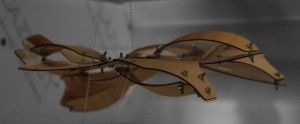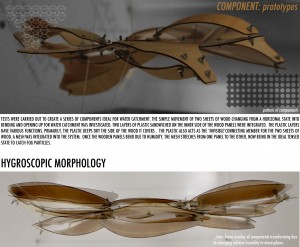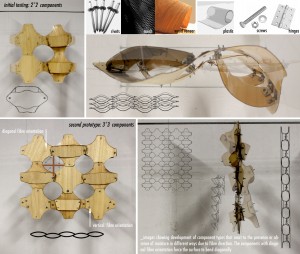Within this architectural context, hygroscopic morphology is defined by the study of forms made from materials that tend to absorb moisture from air. The goal is to produce kinetic energy by nature itself, without any artificial mechanical assistance.The proposal seeked to celebrate the hygroscopic behavior of wood, particularly wood veneer, composed of wood fibre in one direction.
We seeked alternative ways to eliminate absorption from both sides, mainly through plastics and wood varnish. Experiments showed that water particles were being retained on plastic. We started questioning if we could collect these water particles, and began to explore the idea of a passive water collecting systems.
Our testing showed that water particles expand the exposed fibres of the wood, causing bending and warping into the opposite side. If wood is wet from both sides, no deformation appears.
During our first visit to the site, we found ourselves in the middle of a thick mist. The phenomenon seems to be common in the area, as the mountains and hills around gather large amounts of humidity when the sun is absent. Humidity in its usual form, as well as in the form of fog and rain is the “machine” that provides the kinetic energy we are called to use. But rain and fog are also water. Pure water, in fact, that can be consumed after minimal purification procedures. It can also be collected and stored. Some hygroscopic materials are able to trap the water droplets of rain on their fibrous structure. In fact, installations of simple mesh materials have been used successfully on this purpose in many cases. So, hygroscopic morphology is much more than the kinetic energy produced by specific materials like wood.
We decided to focus on combining these two hygroscopic behaviors and creating some kind of mechanism that would be able to collect water. A kinetic water collector that would adapt to the humidity conditions by changing its shape.






